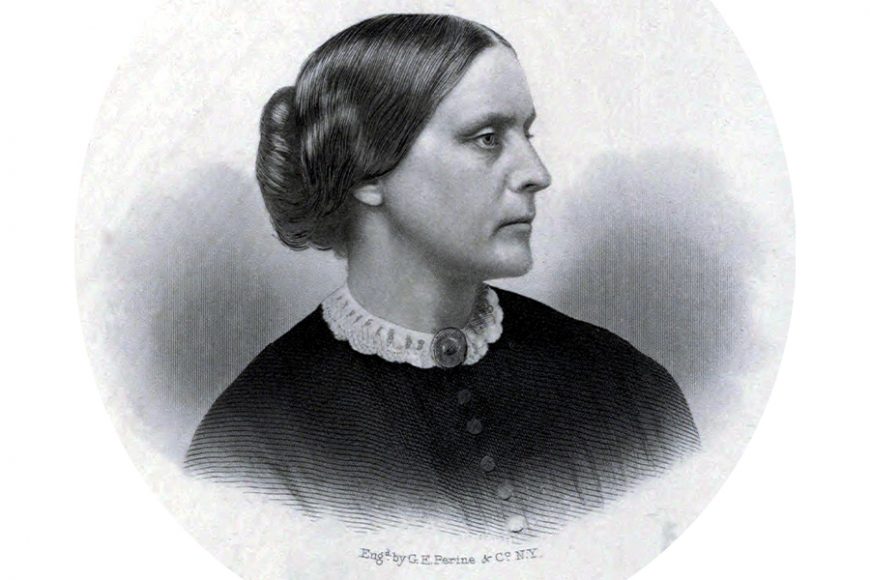“The course of true love never did run smooth,” Shakespeare writes in “A Midsummer Night’s Dream.”
And neither does that of history. Consider the fight for women’s suffrage in the United States, which became the 19th Amendment to the Constitution on Aug. 18, 1920. We tend to think because it was ultimately successful that the battle for women’s right to vote must’ve been one big group effort. And, in some ways, it was. But it was also the story of jagged progress, rivalry among women’s groups and conflict between women and black men, who were also struggling to establish their enfranchisement. Below are 20 enlightening moments in U.S. women’s suffrage:
1. Lydia Taft, an 18th-century widow of means, votes in local elections in Uxbridge, Massachusetts. She is considered the only woman to have done so in Colonial America.
2. New Jersey’s 1776 constitution extends the vote to all adults with a certain amount of property. It’s confined to men in 1807.
3. Kentucky leads the way on women’s suffrage, though women’s right to vote is limited to widows or female heads of households who are over 21 and paying property taxes for the new school system.
4. In the first decades of the 19th century, women break the “sound barrier,” speaking in public about civic affairs for the first time, a crucial step in the advocacy for suffrage. Among them is Lucy Stone, who will become a professional lecturer and a leader of the suffrage movement.
5. The Seneca Falls Convention, held July 19 and 20, 1848 in the Finger Lakes section of New York, brings together some of those who will be major players in the women’s rights movement, including Elizabeth Cady Stanton and Lucretia Mott. Some members stop short, however, at the call to suffrage, a resolution that passes only with the eloquent support of Frederick Douglass, a former slave turned abolitionist.
6. Sojourner Truth, a former slave turned activist, electrifies a regional women’s rights convention in Ohio in 1851 with her powerful “Ain’t I a Woman?” speech.
7. Two supernovas in the annals of women’s history, Stanton and Susan B. Anthony, come together in 1863 to form the Women’s Loyal National League, the first national women’s political organization in the U.S.
8. Stanton, Anthony, Mott, Douglass and Lucy Stone are among the leaders at the 11th annual National Women’s Rights Convention in 1866, which becomes the American Equal Rights Association (AERA). The new organization is soon cleft by those who espouse putting the rights of black men first (Stone) and those who want women and black men to be enfranchised at the same time (Stanton and Anthony). Three years later, Stone helps found the American Woman Suffrage Association (AWSA), while Stanton and Anthony are among those behind the new National Woman Suffrage Association (NWSA).
9. Women are enfranchised in Wyoming Territory and Utah in 1869 and 1870 respectively.
10. In 1871, stockbroker Victoria Woodhull becomes the first woman to address Congress, arguing in a new approach that the Constitution implicitly gives women the right to vote. The idea is struck down four years later by the U.S. Supreme Court in Minor v. Happersett.
11. Anthony is arrested for and convicted of voting in the presidential election of 1872 and ordered to pay a fine of $100. “I shall never pay a dollar of your unjust penalty,” she responds, and never does.
12. U.S. Sen. Aaron A. Sargent, a friend of Anthony, introduces a woman’s suffrage amendment in Congress in 1878. Ultimately, it will become the 19th Amendment in 1920.
13. Belva Ann Lockwood, the first female lawyer to argue a case before the Supreme Court, becomes the first woman to run for president on California’s Equal Rights Party ticket in 1884, even though her fellow suffragists back Republican James G. Blaine in a losing effort to Democrat Grover Cleveland.
14. The more conservative AWSA merges with the more radical NWSA in 1890 to become the National American Woman Suffrage Association (NAWSA), with Stanton as the first president and Anthony, as vice president, succeeding Stanton two years later.
15. The late 19th century proves a daunting challenge for suffrage, which is opposed by several groups — those who do not want to see black enfranchisement expanded to black women; society women who do not want to see the status they claim through their husbands diluted; and German-Americans, who fear that Prohibition-minded suffragists will take away their beer production.
16. In the 1910s, the American West and Midwest continue to lead the way in enfranchising women, with Washington (1910), California (1911), Oregon, Kansas and Arizona (1912) as well as Illinois (1913) giving women the vote. But three years later, the movement was still 24 states short of 36, or the three-fourths majority of the then total 48 states, needed for amendment passage.
17. Alice Paul, who had participated in the militant wing of England’s suffrage movement, forms the National Woman’s Party (NWP) in 1916 to serve as NAWSA’s confrontational arm.
18. In January 1917, NWP stages the first-ever picket of the White House, demanding suffrage in an explosive event that sees the arrest of more than 200 protesters and the imprisonment of about half. In prison, Paul is among the hunger strikers, who are force-fed, putting pressure on Woodrow Wilson’s administration, which releases them.
19. With women being acknowledged for their efforts at home and abroad during World War I and a general election looming in 1920, Congress finally passes the 19th Amendment to the Constitution on May 21, 1919, but states’ ratification begins to stall. Tennessee gives the amendment the 36th state it needs to become the law of the land on Aug. 18, 1920.
20. It would still be a while before the rest followed suit — Connecticut, Delaware and Vermont in 1923, Maryland in 1941, Virginia in 1952, Alabama in 1953, Florida and South Carolina in 1969, Georgia, Louisiana and North Carolina in 1971 and, last but not least, Mississippi as late as 1984.





